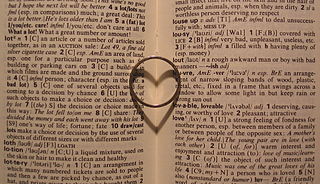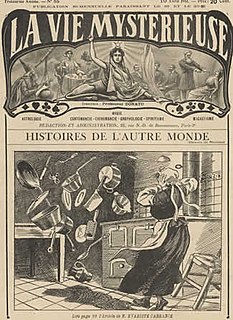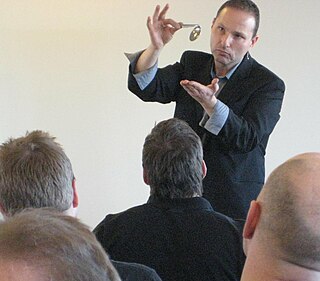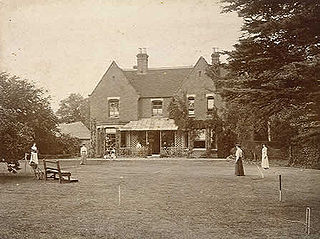 W
WIn parapsychology and spiritualism, an apport is the alleged paranormal transference of an article from one place to another, or an appearance of an article from an unknown source that is often associated with poltergeist activity or séances. Apports reported during séances have been found to be the result of deliberate fraud. No medium or psychic has demonstrated the manifestation of an apport under scientifically controlled conditions.
 W
WAstral projection, is a term used in esotericism to describe an intentional out-of-body experience (OBE) that assumes the existence of a soul called an "astral body" that is separate from the physical body and capable of travelling outside it throughout the universe.
 W
WAccording to spiritual beliefs, an aura or human energy field is a colored emanation said to enclose a human body or any animal or object. In some esoteric positions, the aura is described as a subtle body. Psychics and holistic medicine practitioners often claim to have the ability to see the size, color and type of vibration of an aura.
 W
WBrainwashing is the concept that the human mind can be altered or controlled by certain psychological techniques. Brainwashing is said to reduce its subjects' ability to think critically or independently, to allow the introduction of new, unwanted thoughts and ideas into their minds, as well as to change their attitudes, values and beliefs.
 W
WClairvoyance is the claimed ability to gain information about an object, person, location, or physical event through extrasensory perception. Any person who is claimed to have such ability is said accordingly to be a clairvoyant.
 W
WDactylomancy, from the Greek word for finger, is a term used by proponents to define a form of divination using rings.
 W
WDeathbed phenomena refers to a range of experiences reported by people who are dying. There are many examples of deathbed phenomena in both non-fiction and fictional literature, which suggests that these occurrences have been noted by cultures around the world for centuries, although scientific study of them is relatively recent. In scientific literature such experiences have been referred to as death-related sensory experiences (DRSE). Dying patients have reported to staff working in hospices they have experienced comforting visions.
 W
WA demon is a supernatural being, typically associated with evil, prevalent historically in religion, occultism, literature, fiction, mythology, and folklore; as well as in media such as comics, video games, movies, anime, and television series.
 W
WDermo-optical perception (DOP) — also known as dermal vision, dermo-optics, eyeless sight, eyeless vision, skin vision, skin reading, finger vision, paroptic vision, para-optic perception, cutaneous perception, digital sight, and bio-introscopy — is a term that is used in parapsychological literature to denote the alleged capability to perceive colors, differences in brightness, and/or formed images through the skin, especially upon touching with the fingertips.
 W
WEctoplasm is a term used in spiritualism to denote a substance or spiritual energy "exteriorized" by physical mediums. It was coined in 1894 by psychical researcher Charles Richet. Although the term is widespread in popular culture, the physical existence of ectoplasm is not accepted by science and many purported examples were exposed as hoaxes fashioned from cheesecloth, gauze or other natural substances.
 W
WWithin ghost hunting and parapsychology, electronic voice phenomena (EVP) are sounds found on electronic recordings that are interpreted as spirit voices that have been either unintentionally recorded or intentionally requested and recorded. Parapsychologist Konstantīns Raudive, who popularized the idea in the 1970s, described EVP as typically brief, usually the length of a word or short phrase.
 W
WIn folklore, a ghost is the soul or spirit of a dead person or animal that can appear to the living. In ghostlore, descriptions of ghosts vary widely from an invisible presence to translucent or barely visible wispy shapes, to realistic, lifelike forms. The deliberate attempt to contact the spirit of a deceased person is known as necromancy, or in spiritism as a séance. Other terms associated with it are apparition, haunt, phantom, poltergeist, shade, specter or spectre, spirit, spook, wraith, demon, and ghoul.
 W
WJinn – also romanized as djinn or anglicized as genie – are supernatural creatures in early pre-Islamic Arabian and later Islamic mythology and theology. Like humans, they are created with fitra, born as believers, but their attitude depends on whether they accept God's guidance. Since jinn are neither innately evil nor innately good, Islam acknowledged spirits from other religions, and was able to adapt spirits from other religions during its expansion. Jinn are not a strictly Islamic concept; they may represent several pagan beliefs, and beliefs in the early Abrahamic religions integrated into Islam.
 W
WLevitation or transvection in the paranormal context is the rising of a human body and other objects into the air by mystical means. While believed by some in certain religious and New Age communities to occur as a result of supernatural, psychic or "energetic" phenomena, there is no scientific evidence of levitation ever occurring, and alleged cases of levitation can usually be explained by natural causes such as trickery, illusion, and hallucination.
 W
WIn spiritualism, paranormal literature and some religions, materialization is the creation or appearance of matter from unknown sources. The existence of materialization has not been confirmed by laboratory experiments. Numerous cases of fraudulent materialization demonstrations by mediums have been exposed.
 W
WA near-birth experience is an alleged recollected event which occurred before or during one's own birth, or during the pregnancy, an alleged remembering of one's own pre-existence, or an alleged encounter with the unborn child experienced by relatives or close family friends. Under this usage, the term "near-birth experience" is analogous to the term "near-death experience."
 W
WPlant perception or biocommunication is the paranormal idea that plants are sentient, that they respond to humans in a manner that amounts to ESP, and that they experience a range of emotions or parapsychological states. Since plants lack nervous systems, paranormal claims regarding plant perception are considered pseudoscience by the scientific community.
 W
WA psychic is a person who claims to use extrasensory perception (ESP) to identify information hidden from the normal senses, particularly involving telepathy or clairvoyance, or who performs acts that are apparently inexplicable by natural laws, such as psychokinesis or apportation. Although many people believe in psychic abilities, the scientific consensus is that there is no proof of the existence of such powers, and describes the practice as pseudoscience. The word "psychic" is also used as an adjective to describe such abilities.
 W
WA psychic reading is a specific attempt to discern information through the use of heightened perceptive abilities; or natural extensions of the basic human senses of sight, sound, touch, taste and instinct. These natural extensions are claimed to be clairvoyance (vision), clairsentience (feeling), claircognisance and clairaudience (hearing) and the resulting statements made during such an attempt. The term is commonly associated with paranormal-based consultation given for a fee in such settings as over the phone, in a home, or at psychic fairs. Though psychic readings are controversial and a focus of skeptical inquiry, a popular interest in them persists. Extensive experimentation to replicate psychic results in laboratory conditions have failed to find any precognitive phenomena in humans. Psychic reading is pseudoscience. A cold reading technique allows psychics to produce seemingly specific information about an individual from social cues and broad statements.
 W
WPsychokinesis, or telekinesis, is an alleged psychic ability allowing a person to influence a physical system without physical interaction.
 W
WPyramidology refers to various religious or pseudoscientific speculations regarding pyramids, most often the Giza pyramid complex and the Great Pyramid of Giza in Egypt. Some "pyramidologists" also concern themselves with the monumental structures of pre-Columbian America, and the temples of Southeast Asia.
 W
WPyrokinesis is the purported psychic ability allowing a person to create and control fire with the mind. As with other parapsychological phenomena, there is no conclusive evidence in support of the actual existence of pyrokinesis. Many alleged cases are hoaxes, the result of trickery.
 W
WSpirit photography is a type of photography whose primary goal is to capture images of ghosts and other spiritual entities, especially in ghost hunting. It dates back to the late 19th century. The end of the American Civil War and the mid-19th Century Spiritualism movement contributed greatly to the popularity of spirit photography. Photographers such as William Mumler and William Hope ran thriving businesses taking photos of people with their supposed dead relatives. Both were shown to be frauds, but "true believers", such as Sir Arthur Conan Doyle, refused to accept the evidence as proof of a hoax.
 W
WSpirit possession is an unusual or altered state of consciousness and associated behaviors purportedly caused by the control of a human body by spirits, ghosts, demons, or gods. The concept of spirit possession exists in many cultures and religions, including Buddhism, Christianity, Haitian Vodou, Hinduism, Islam, Wicca, and Southeast Asian and African traditions. Depending on the cultural context in which it is found, possession may be considered voluntary or involuntary and may be considered to have beneficial or detrimental effects on the host.
 W
WSpoon bending is the apparent deformation of objects, especially metal cutlery, purportedly by paranormal means. It is a common theme for magic tricks, which use a variety of methods to produce the effect. Performers commonly use misdirection to draw their audience's attention away while the spoon is manually bent. Another method uses a metal spoon that has been prepared by repeatedly bending the spoon back and forth, weakening the material. Applying light pressure will then cause it to bend or break.
 W
WThe Stone Tape theory is the speculation that ghosts and hauntings are analogous to tape recordings, and that mental impressions during emotional or traumatic events can be projected in the form of energy, "recorded" onto rocks and other items and "replayed" under certain conditions. The idea draws inspiration and shares similarities with views of 19th-century intellectualists and psychic researchers, such as Charles Babbage, Eleonor Sidgwick and Edmund Gurney. Contemporarily, the concept was popularized by a 1972 Christmas ghost story called The Stone Tape, produced by the BBC. Following the play's popularity, the idea and the term "stone tape" were retrospectively and inaccurately attributed to the British archaeologist turned parapsychologist T. C. Lethbridge, who believed that ghosts were not spirits of the deceased, but were simply non-interactive recordings similar to a movie.
 W
WTelepathy is the purported vicarious transmission of information from one person to another without using any known human sensory channels or physical interaction. The term was first coined in 1882 by the classical scholar Frederic W. H. Myers, a founder of the Society for Psychical Research (SPR), and has remained more popular than the earlier expression thought-transference.
 W
WThoughtography, also called projected thermography, psychic photography, nengraphy, and nensha (Japanese: 念写), is the claimed ability to "burn" images from one's mind onto surfaces such as photographic film by parapsychic means. While the term "thoughtography" has been in the English lexicon since 1913, the more recent term "projected thermography" is a neologism popularized in the 2002 U.S. film The Ring, a remake of the 1998 Japanese horror film Ring.
 W
WThe undead are beings in mythology, legend, or fiction that are deceased but behave as if they were alive. A common example of an undead being is a corpse reanimated by supernatural forces, by the application of either the deceased's own life force or that of another being. The undead may be incorporeal (ghosts) or corporeal.
 W
WXenoglossy, also written xenoglossia and sometimes also known as xenolalia, is the supposedly paranormal phenomenon in which a person is able to speak or write a language they could not have acquired by natural means. The words derive from the Ancient Greek xenos (ξένος), "foreigner" and glōssa (γλῶσσα), "tongue" or "language". The term xenoglossy was ostensibly coined by French parapsychologist Charles Richet in 1905. Stories of xenoglossy are found in the New Testament, and contemporary claims of xenoglossy have been made by parapsychologists and reincarnation researchers such as Ian Stevenson. There is no scientific evidence that xenoglossy is an actual phenomenon.
 W
WZener cards are cards used to conduct experiments for extrasensory perception (ESP). Perceptual psychologist Karl Zener (1903–1964) designed the cards in the early 1930s for experiments conducted with his colleague, parapsychologist J. B. Rhine (1895–1980). The original series of experiments have been discredited and replication has proven elusive.